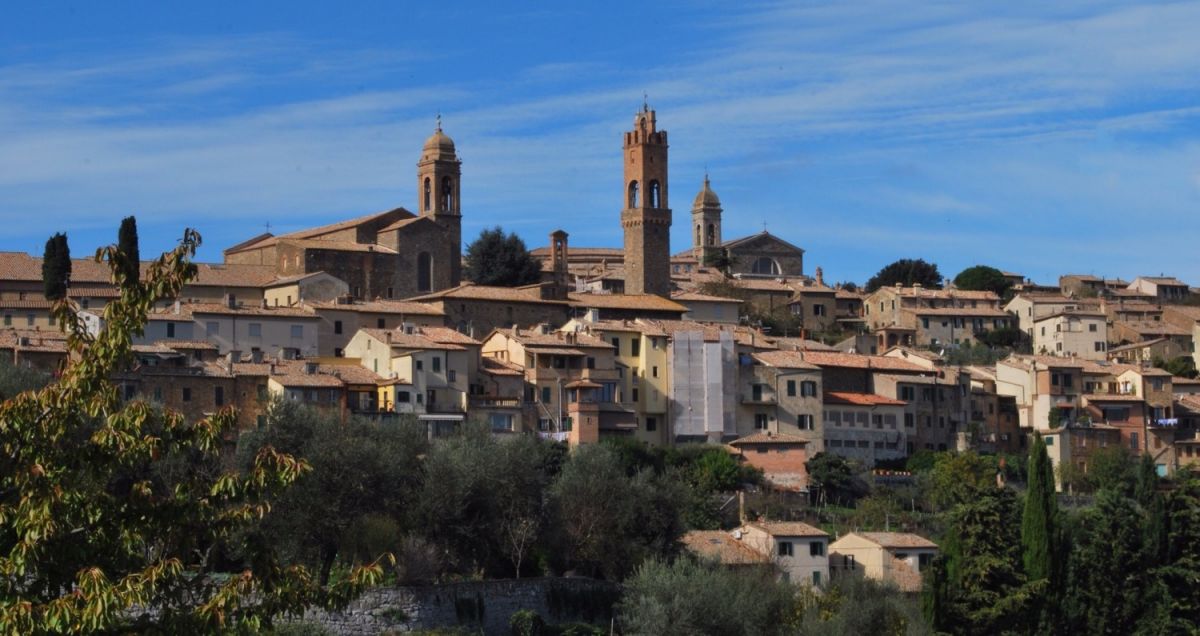Results
2,284 Results
Loading more Results ...
Loading more Results ...
| Brunello di Montalcino DOCG |
Description to Brunello di Montalcino DOCG
DOCG area for red wine in the Italian region of Tuscany. The zone encompasses the slopes around the picturesque hilltop town of Montalcino, 40 kilometres south of Siena in the province of the same name. Other DOC areas in Montalcino are Moscadello di Montalcino, Rosso di Montalcino and Sant'Antimo. Brunello di Montalcino is made from 100 per cent pure Brunello, a clone of the Sangiovese variety that was selected in the 1870s on the Biondi-Santi family's Il Greppo vineyard. A wine from this clone was first produced by Clemente Santi in 1865 under the name "Vino Rosso Scelto". Ferruccio Biondi-Santi - the grandson of the "inventor" - continued the selection and planted a large part of his vineyards with it.

In 1888 and 1891, he pressed a wine known as "Brunello" for the first time (although this name had already been used in the 14th century). He aged it for several years in large Slavonian oak barrels. There are still a few bottles of these two legendary vintages in the cellar today. The next two generations of the family (Feruccio's son Tancredi and grandson Franco) went on to make the wine famous all over the world. The fact that only four vintages were produced until 1945 - the aforementioned 1888 and 1891, as well as 1925 and 1945 - contributed to its cult status, which, in addition to the outstanding quality, was also a reason for the exorbitantly high prices. The winery enjoyed exclusive production privileges for many decades. Until after the Second World War, the name Brunello was used solely by Biondi-Santi.
Until the 1970s, the majority of production still came from this winery, as there were only 25 producers. Today, Brunello di Montalcino is produced by around 200 wineries. In 1960, the vineyard area was only around 60 hectares, but this increased to almost 700 by 1980 and to around 1,500 hectares today. Unfortunately, this expansion also contributed to the fact that the quality range is quite wide. Together with the equally famous red wine Vino Nobile di Montepulciano, which also comes from Tuscany, it is one of the first two wines in Italy to receive DOCG classification in 1980. Brunello is one of the most famous red wines in Italy and Europe. An important aspect of its quality lies in the very special climate, as it is warmer and drier than in the neighbouring Chianti areas and the nights are cooler.
The alcohol content must be at least 12.5% by volume, but often reaches 13.5%. The minimum ripening periods have been drastically reduced in recent decades. At the beginning of the 1960s, 42 months or 3.5 years of ageing in large Slavonian oak barrels was still required, but this was reduced to 36 months in 1990 and finally to 24 months in 1998. However, the total ageing time in barrel and bottle must still be 48 months. This means that the wine is released for sale from 1 January of the fourth (previously sixth) year following the harvest, and in the case of Riserva from the fifth (previously seventh) year following the harvest.
If the grapes come from classified vineyards, Vigna can be indicated on the bottle label followed by the vineyard name. The intense ruby red wine has a tannic flavour with aromas of exotic woods, fruit, vanilla and jam. The wine, which is still hard and inaccessible when young, only develops after several years of ageing in the bottle. It is extremely long-lived, with the Riserva often only reaching its peak or optimum drinking maturity after 15 to 20 years or more. The best vintages are 1978, 1982, 1983, 1985, 1988, 1990, 1991, 1993, 1994, 1995, 1997 and 1998.
The best-known producers include Abbadia Ardenga, Altesino, Argiano, Castello Banfi, Barbi, Biondi-Santi, Campogiovanni, Capanna, Caparzo, Caprili, Casanova di Neri, Castelgiocondo (Frescobaldi), Ciacci Piccolomini d'Aragona, Col d'Orcia, Coldisole, Costanti, Ferrero, Fuligini, La Serena, Le Chiuse, Lisini, Martinozzi, Piccolomini, Pieve Santa Restituta, Poggio Antico, Poggio di Sotto, Poggione, Salvioni, Scopetone, Siro Pacenti, Talenti, Tenuta La Fuga, Tenute Silvio Nardi, Valdicava, Vasco Sassetti.
Recent wines 1412
 Albatreti
— Tuscany
2018 Brunello di Montalcino DOCG
88 WP
very good
52.00 €
Albatreti
— Tuscany
2018 Brunello di Montalcino DOCG
88 WP
very good
52.00 €

 Banfi
— Tuscany
2009 Brunello di Montalcino DOCG Poggio alle Mura
Up to 50.00 €
Banfi
— Tuscany
2009 Brunello di Montalcino DOCG Poggio alle Mura
Up to 50.00 €

The most important grape varieties
More information in the magazine
- The curse and blessing of water Brunello di Montalcino
- Climate change, sparkling wine and Sangiovese Frescobaldi between tradition and future
- The wine that comes from prison On the Italian prison island of Gorgona, prisoners run a vineyard
- In Focus: Chianti Classico Excellent 2019s, promising 2020s
- Collection of the Year 2021 - Tuscany Lisini
- Tuscany strengthens its pioneering role in wine tourism According to Covid, offers pick up on new social trends and needs
- Italy: Empty cellars, small quantities, higher prices High harvest losses and expensive raw materials cause wine prices to rise significantly
- Climate change alters traditional winegrowing in Tuscany Interview with the Italian agronomist Paolo Storchi about the future of Sangiovese
- How Sangiovese defies climate change New cultivation techniques should protect the traditional variety in the ever hotter Tuscany
- Classics in transition BEST OF Chianti Classico